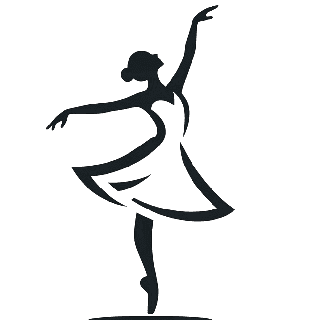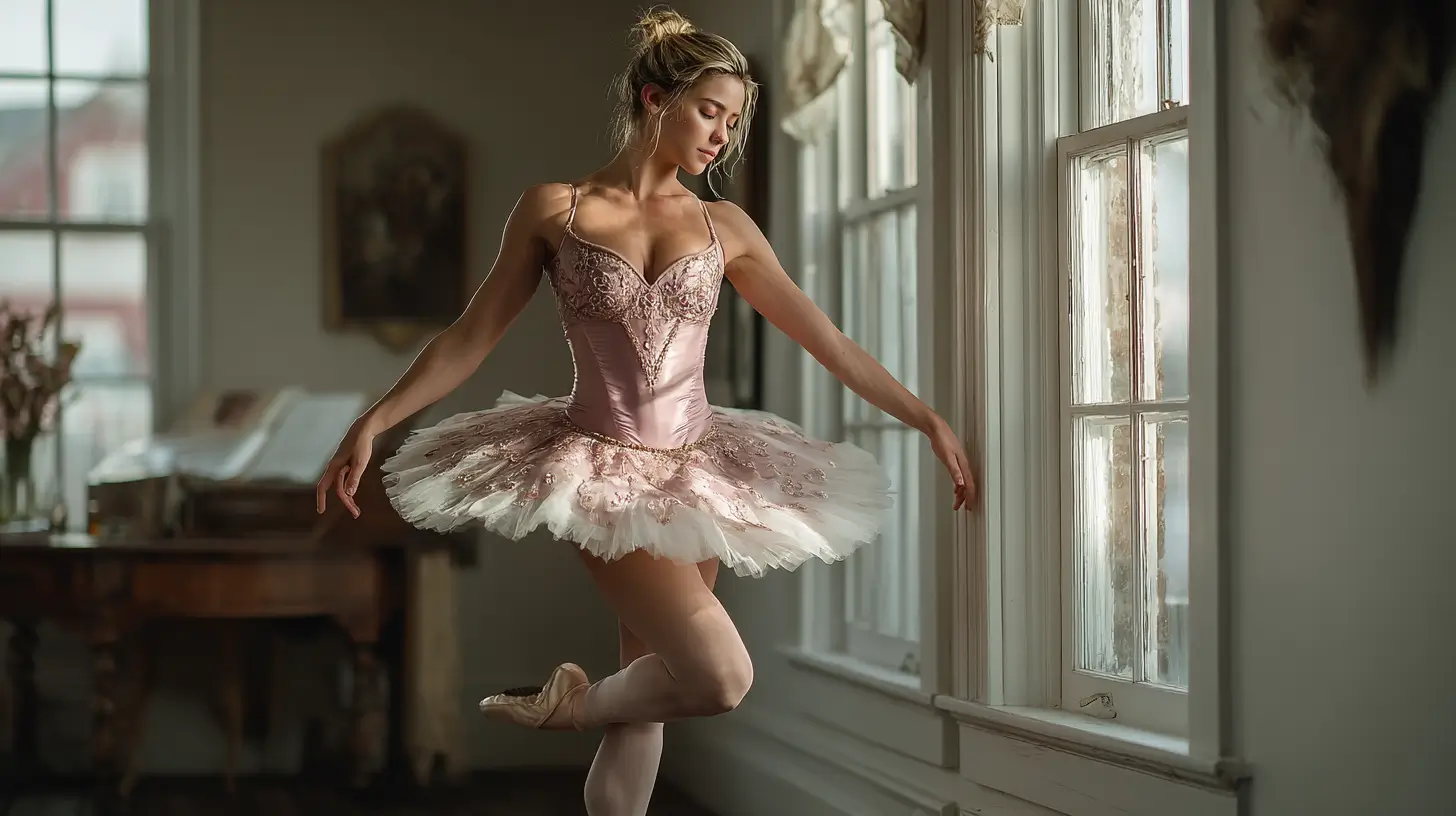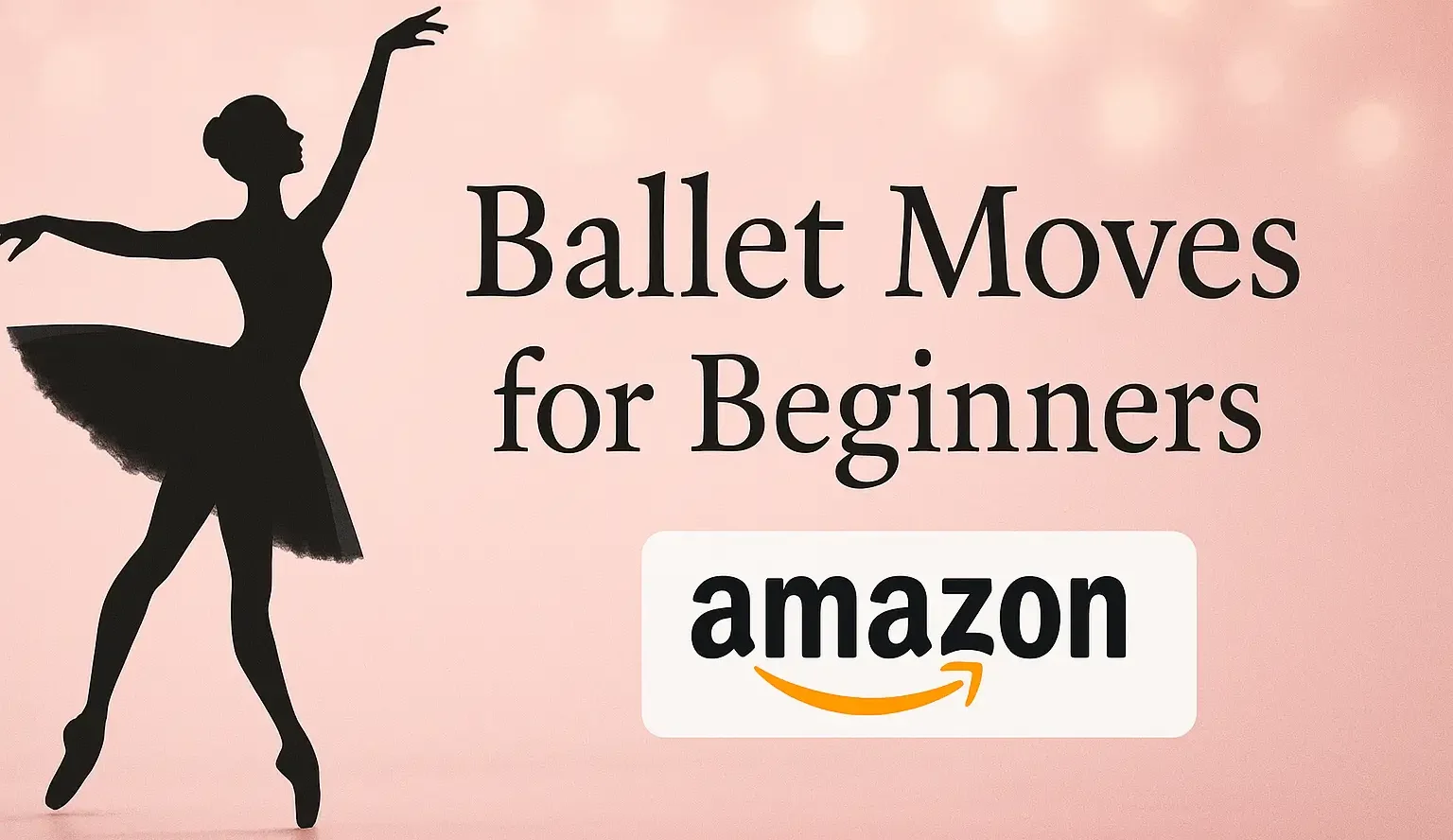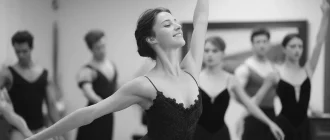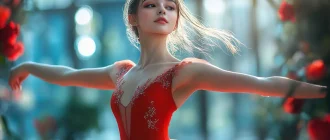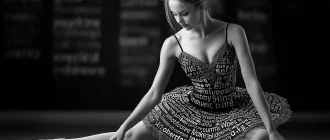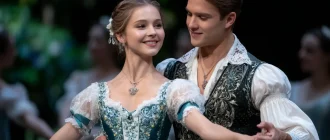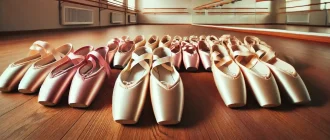Are you looking to start ballet but not sure where to begin? You’re in the right place. This guide covers seven easy ballet moves perfect for beginners at home.
You don’t need any prior experience or a fancy studio setup. Get ready to embrace the elegance of ballet in the comfort of your living room.
Graceful Insights
- Proper gear, including ballet slippers, comfortable attire, and hair secured, enhances safety and focus for effective ballet practice at home.
- Mastering the five basic foot positions and key movements, such as Plié, Relevé, and Sauté, builds a strong foundation for further ballet exploration.
- Incorporating fun methods like dance games and video call parties keeps ballet practice engaging and fosters confidence and motivation in beginners.
Art de Podcast
| Ballet Move | Description | Benefits | Tips for Correct Form |
|---|---|---|---|
| Plié | Bending of the knees while keeping the back straight. This can be done in the first or second Position. | It builds leg strength and improves balance. | Keep knees aligned with toes; maintain a lifted chest. |
| Relevé | Rise onto the balls of your feet, keeping your legs straight and your core engaged. | Enhances calf strength and stability. | Engage your core, keep your heels high, and avoid rolling your ankles. |
| Tendu | Sliding one foot forward, side, or back while keeping the toes on the floor. | Increases leg flexibility and control. | Point the toes, keep hips stable, and maintain turnout. |
| Dégagé | A quick brush of the foot off the floor, like a tendu with extra lift. | Builds foot and ankle strength. | Use the inner thigh to lift; control the leg as it returns to the ground. |
| Rond de Jambe | Tracing a half-circle on the floor with the working leg, moving from front to back. | Enhances hip flexibility and turnout. | Keep the standing leg straight and hips square. |
| Passé | Lifting one foot to the knee of the opposite leg, forming a triangle shape with the legs. | Improves balance and coordination. | Engage the core, keep shoulders relaxed, and avoid tilting. |
| Sauté | A simple jump from first or second Position, landing softly with bent knees. | Increases leg strength and cardiovascular health. | Land with your toes first, then your heels; keep your knees soft. |
Essential Gear for Ballet Practice at Home
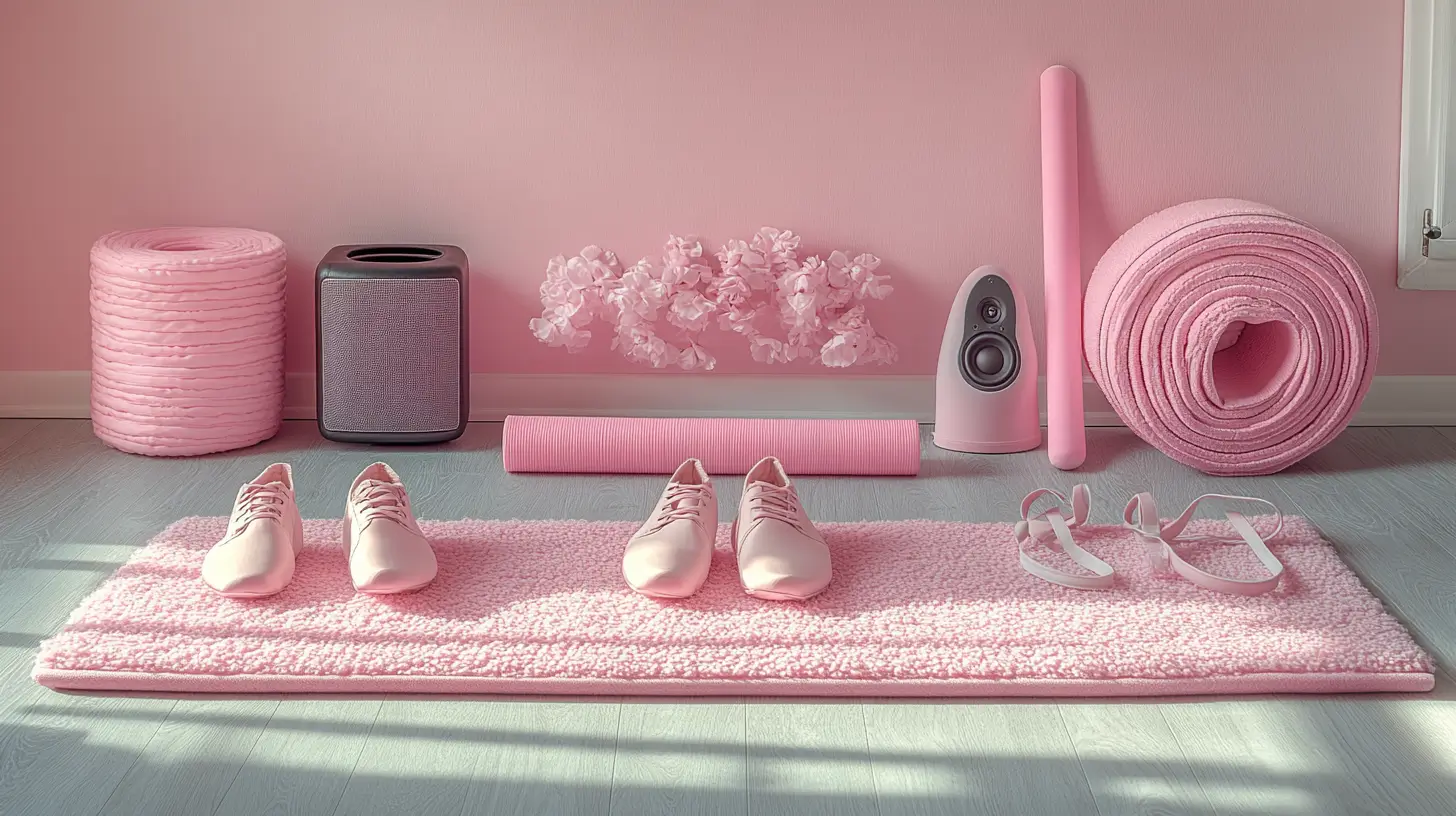
Before practicing ballet, ensure you have the right gear. The proper equipment enhances safety and improves your overall experience. Thankfully, you don’t need a dedicated dance studio or expensive tools to start at home. As you progress, consider investing in pointe shoes, specialized ballet footwear designed for performing on your toes.
You’ll need ballet slippers, comfortable attire, and hair accessories. Ballet slippers support correct foot placement and controlled movement, while proper clothing allows for ease of movement and observing body lines. Securing your hair keeps it out of your face, helping you focus. Adding props like scarves and wands can also make practice sessions more fun.
For children, making practice enjoyable is key. Playful elements can enhance their learning experience and keep them engaged. Let’s explore each essential gear in detail.
Ballet Slippers
Ballet slippers are essential for anyone practicing ballet, as they support and maintain proper alignment, foot placement, and movement. Choose slippers that are half a size larger than your regular shoes for a comfortable fit, allowing for the natural spread of your feet.
Beginners should opt for ballet slippers with a rounded toe and full sole. These features aid movement and help develop foot strength and flexibility. Use an online size guide to find the right fit.
The right slippers can greatly impact your practice by enhancing performance and supporting proper foot placement, which is crucial for executing ballet moves correctly.
Comfortable Attire
Appropriate ballet attire is as important as having the right slippers. Proper clothing enhances movement and helps you observe your body’s alignment and positioning, vital for form correction and ensuring graceful, accurate movements.
A leotard is a popular choice for ballet practice as it allows dancers to see the lines their arms and legs make, aiding in form correction. Leotards come in various styles, including long and short sleeves, catering to different preferences and providing flexibility in expression and movement. Footed tights should also be worn to provide proper coverage and comfort.
Suitable attire makes a significant contribution to effective ballet practice at home. It helps maintain proper alignment and boosts self-confidence as you observe your progress.
Hair Accessories
Securing your hair helps you maintain focus and avoid distractions during ballet practice. The classic ballerina bun is effective for keeping hair neat and secure, looks elegant, and keeps hair out of the way, allowing full concentration on movements.
To achieve a perfect ballerina bun, gather your hair into a high ponytail, twist it around the base, and secure it with hairpins and a hair tie. This hairstyle enhances concentration and allows for free movement without hair getting in the way.
With your hair neatly tied up, you can move gracefully and focus on perfecting your ballet techniques.
Fundamental Ballet Positions
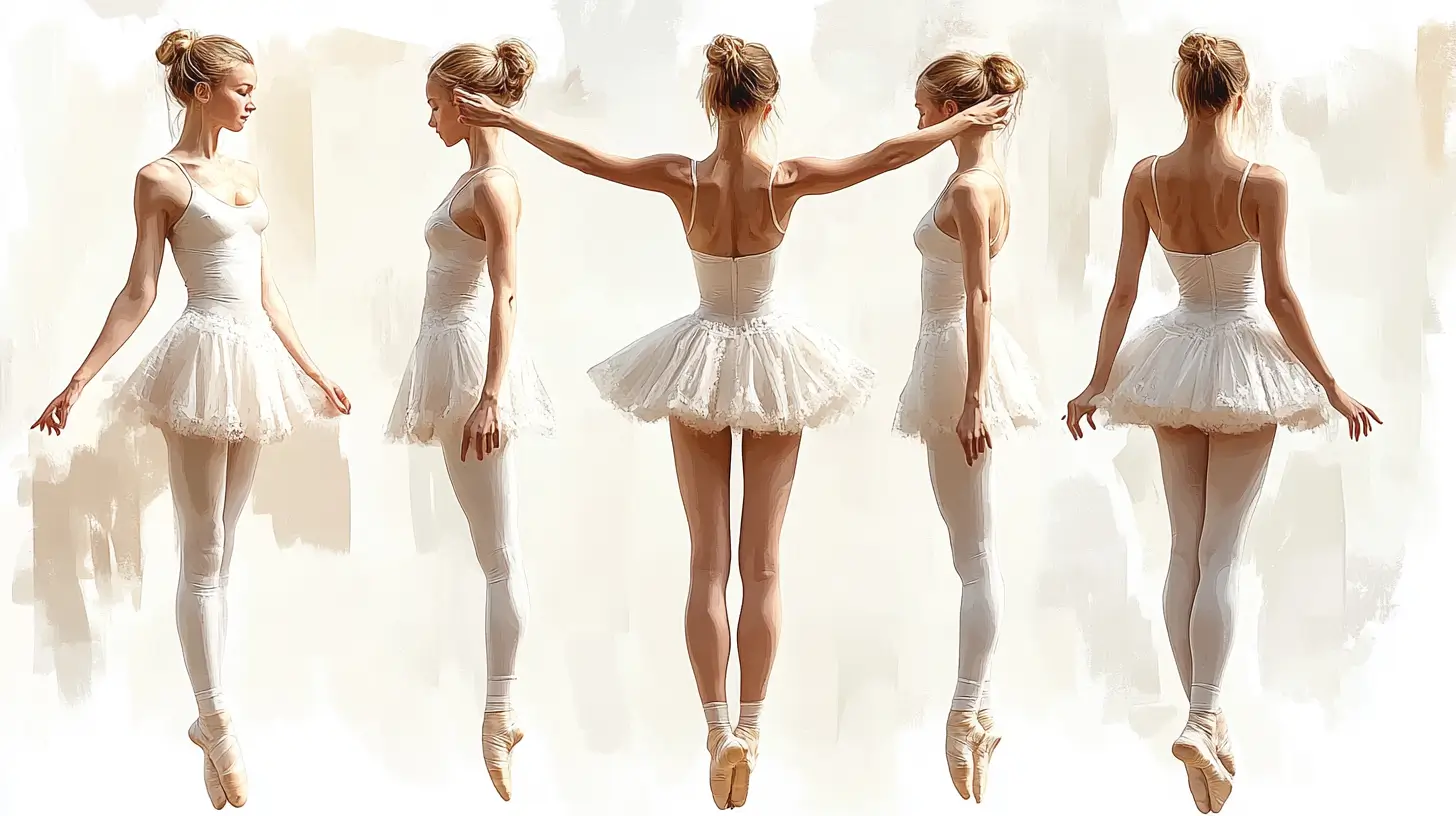
Mastering fundamental ballet positions is crucial, as they form the foundation of all ballet movements. Ballet technique relies on five basic foot positions, essential for executing movements with precision and grace: the first, Second, Third, Fourth, and fifth Positions.
Beginners should start with the First, Second, and Third positions. These five basic positions are vital for developing balance, posture, and alignment and building a strong foundation for more complex movements.
Building strength and flexibility takes time. Be patient and practice regularly to improve your ability to develop strength and confidence.
First Position
The First Position in classical ballet is where it all begins. Stand with heels together and toes pointed outwards, forming a straight line. Maintain a straight position with legs straight, keeping your heels together.
Use visual images to maintain proper alignment. For instance, imagine your knees as umbrellas opening outward. This can help children achieve the correct form by turning their feet outwards to form a 180-degree angle.
Second Position
The Second Position builds on the First Position. Stand with feet hip-distance apart and toes pointed outwards. This stance emphasizes balance and posture, fundamental to all ballet movements.
Visualize correct knee placement by thinking of one Position of your knees as an umbrella for your other arm or your toes. This imagery ensures proper alignment and outward turning of the knees.
Third Position
The Third Position involves placing one foot in front of the other, with the heel of the front foot touching the back foot’s arch. This Position is more advanced than the First and Second but is crucial for transitioning between movements.
Proper left foot placement in the third position helps develop balance and coordination. Practicing this Position prepares you for more complex ballet steps.
Basic Movements to Master
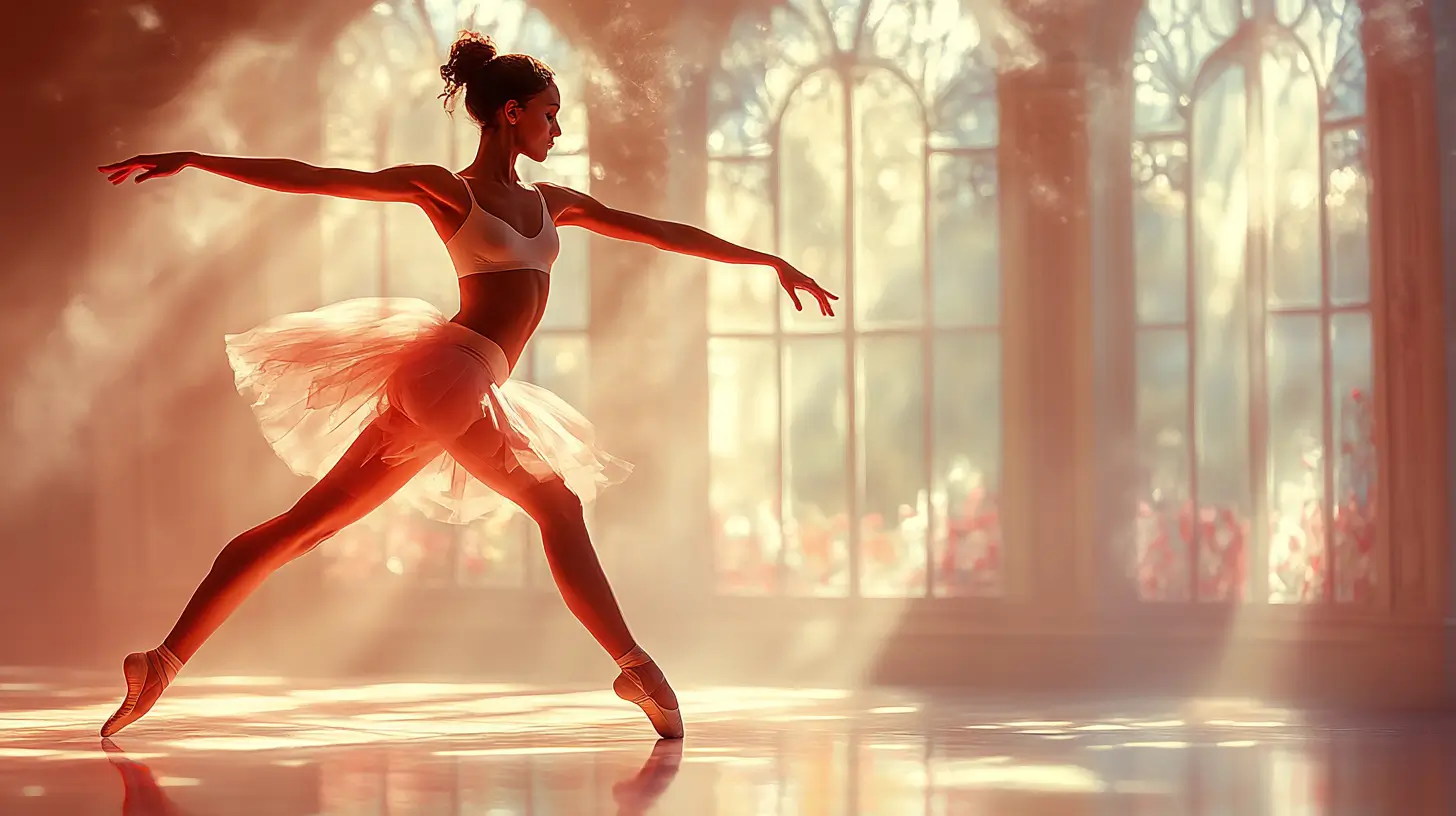
After mastering the fundamental positions, learn some basic ballet movements. These are the building blocks of classical ballet and are essential for developing strength, flexibility, and control. Key movements to focus on are Plié, Relevé, and Sauté.
In these movements, the supporting leg bears the dancer’s weight while the other leg, the working leg, executes the movement.
Plié is foundational for warming up the legs and improving strength. Relevé involves rising onto the balls of your feet, which enhances balance and calf strength. Sauté is a simple jump combining plié and relevé, emphasizing coordination and strength.
Consistent practice of these movements helps develop muscle memory and refines ballet skills.
Plié
Plié involves bending one leg at the knee while keeping the other straight and wide apart. Starting in the First Position, bend your knees over your big toes, ensuring your supporting leg remains straight and aligned while the working leg bends.
Performing a plié develops leg strength and control. It is crucial for warming the legs and preparing for more complex movements. Incorporate plié into your routine to enhance flexibility and strength.
Relevé
Relevé involves rising onto the balls of one foot and the other from a bent position. This movement is essential for developing balance and strengthening your calves. Begin from a demi-plié position and rise onto the balls of your feet, maintaining an upright posture.
Regularly practicing relevés improves balance and alignment, which is crucial for executing advanced ballet moves. It also strengthens calves, making movements more controlled and graceful.
Sauté
Sauté combines plié and relevé into a simple jump. This movement starts from a plié, followed by a quick spring into the air, landing back into a plié. It emphasizes leg strength and upper body control.
Executing a sauté engages both legs and arms, promoting coordination and upper body strength. Raising your arms high during the jump enhances the aesthetic and helps maintain good posture.
Arm Positions in Ballet
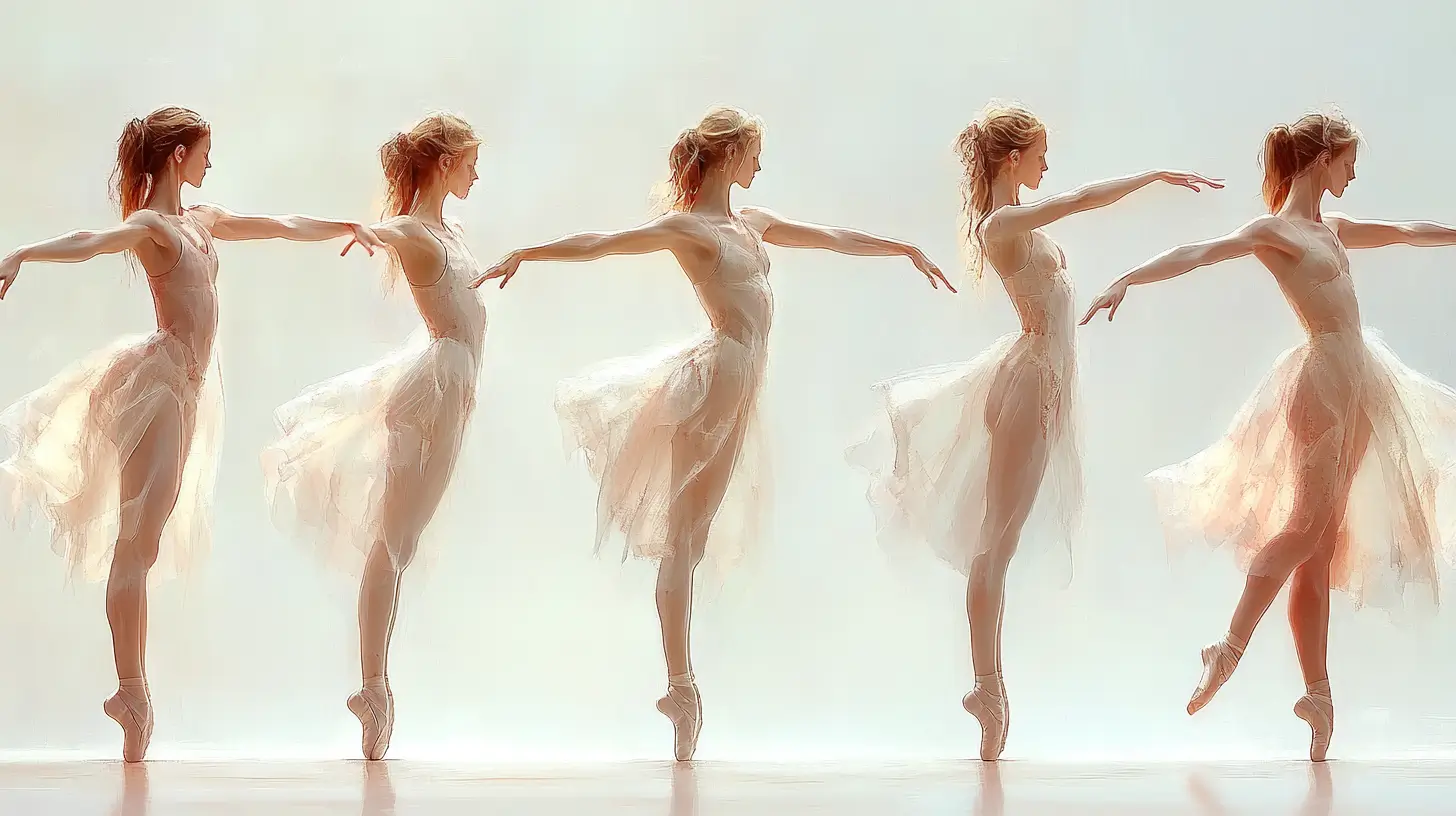
In classical ballet, arm positions, or ‘port de bras,’ are as important as foot positions. They add grace and control to movements, making them look elegant and fluid. Understanding and mastering these positions is key to performing ballet with poise and elegance.
The basic arm positions include the Preparatory Position, En Avant, and En Haut. These basic positions form the foundation for various ballet movements and help maintain proper alignment from the shoulders to the fingertips.
Preparatory Position
The Preparatory Position involves holding the arms in a gentle curve at hip level. This same Position is a balanced starting point for the many variations of ballet movements and helps maintain proper alignment.
In the Preparatory Position, arms are rounded and held low near the hips, creating a soft curve. This Position sets up graceful transitions to all other leg and arm positions.
En Avant
En Avant is a basic arm position where the arms are held forward as if cradling an imaginary beach ball. This promotes good posture and upper body alignment, making it easier to maintain balance and grace during movements.
En Haut
In the En Haut position, arms are circularly elevated above the head. This circular movement creates a fluid appearance in movements and emphasizes a straight alignment from the shoulders to the fingertips.
Proper alignment in En Haut is crucial for executing ballet moves with elegance. It ensures that arms and upper body work harmoniously with legs and feet, creating a cohesive and graceful performance.
Combining Foot and Arm Positions
Combining foot and arm positions is essential for executing complete ballet steps correctly. Integrating movements enhances the dancer’s elegance and control.
Focus on holding each Position and transitioning smoothly. Key combinations include Demi Plié in the First Position, Relevé in the Second Position, and Sauté in the Third and Fourth or Fifth Position. These combinations develop coordination, balance, and strength.
Demi Plié in First Position
A demi plié in First Position develops arm coordination through knee bending. Begin with feet in a position with heels together and toes pointed outward; bend your knees while maintaining a gentle curve in your arms at hip level.
Relevé in Second Position
In a Relevé in Second Position, keeping arms en avant enhances balance and poise. Start with feet apart at hip-width, and rise onto the balls of your feet while extending your arms forward.
Arms en avant help maintain proper posture, allowing for graceful transitions when one leg is over the other during the relevé. This combination builds calf strength and improves coordination and balance.
Sauté in Third Position
A Sauté is a simple jump starting from a plié, with simple jumps that emphasize coordination and leg strength. Begin in the Third Position with one arm or foot in front of the other. Bend your knees into a plié and spring into the air.
Raising your arms high enhances the aesthetic of the jump and promotes good posture. Integrating arm positions with leg movements enables full-body strength and balance in the sauté.
Fun Ways to Practice Ballet Moves
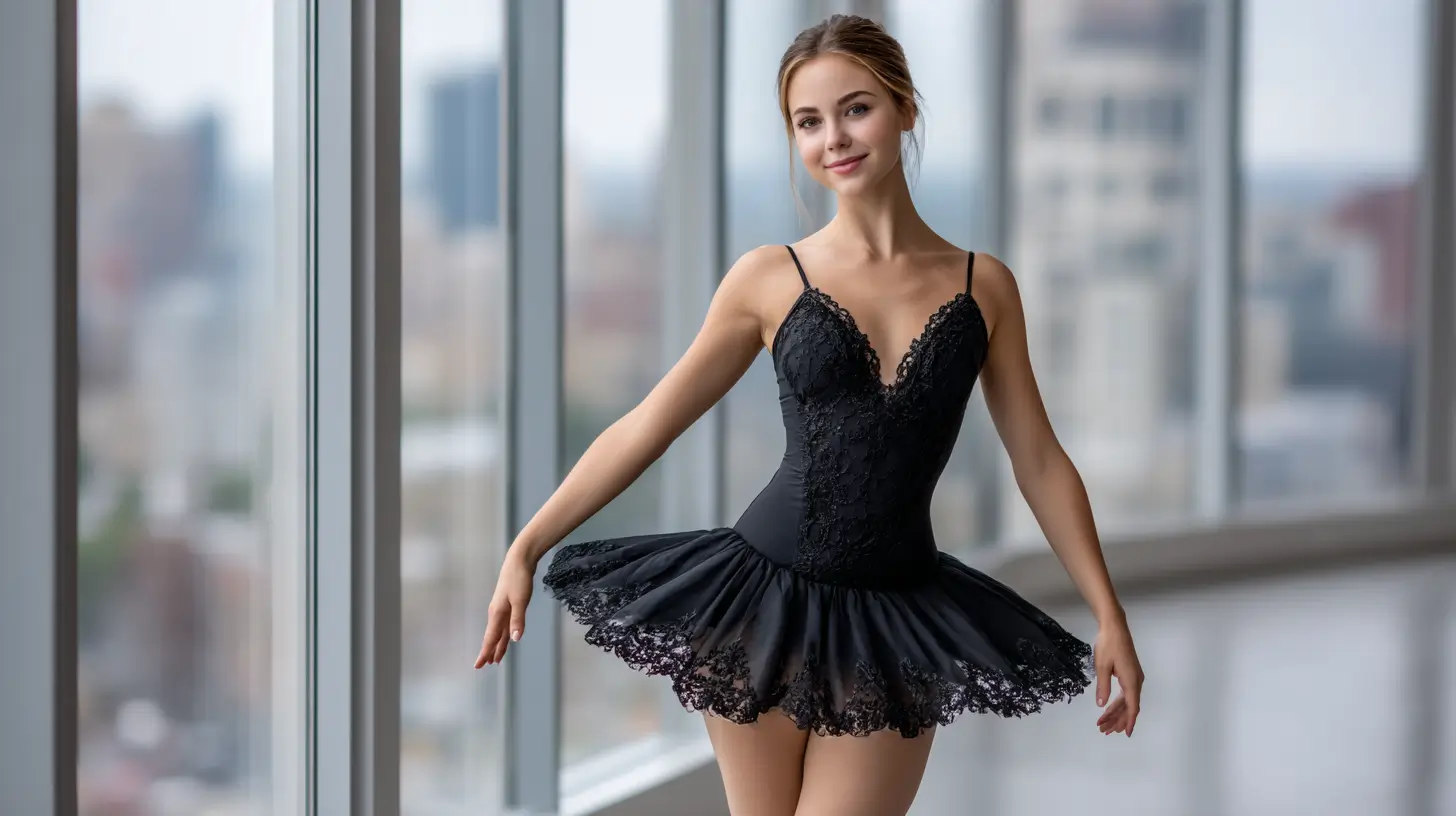
Practicing ballet should be enjoyable and engaging. Choose a quiet location free from distractions. Incorporate mirrors and a barre for stability and balance during exercises, and consider a shock-absorbing surface to protect your joints.
Adding fun elements like Dance Games, Imagery Techniques, and Video Call Dance Parties can make your practice sessions more enjoyable. These methods not only make learning fun but also help reinforce ballet techniques.
Dance Games
Using games during practice sessions can make learning ballet more engaging and enjoyable. Games like Simon Says or Follow the Leader help reinforce dance movements by allowing dancers to learn through play. Incorporating these games encourages repetition in a fun way, helping to retain memory of ballet techniques.
Imagery Techniques
Imagery techniques are valuable in ballet as they help dancers visualize movements, improving muscle memory and overall performance. Techniques like visualizing a flower opening for a tendu or imagining a swan gliding can help children connect with the movements and positions.
Incorporating these techniques into practice can enhance a dancer’s ability to remember and execute positions easily and gracefully.
Video Call Dance Parties
Remote dance sessions with friends can create a fun and social atmosphere for practicing ballet. Organizing remote dance parties with friends enhances social interaction while practicing ballet, making it a more interactive and engaging experience.
Building Confidence and Enjoyment
Engaging in regular ballet practice helps develop self-assurance and a love for the art. Regular practice, coupled with a supportive environment, fosters self-confidence in ballet.
Incorporating enjoyable methods during practice can enhance motivation and retention in ballet learning. Short practice sessions, celebrating progress, and exploring variations are key to building confidence and enjoyment in a beginner ballet class.
Short Practice Sessions
Implementing frequent, short practice intervals is key to successful ballet practice. These brief sessions help maintain a dancer’s focus, prevent distractions, and avoid fatigue.
Short practice sessions can also elevate enjoyment in ballet, making learning more fun and keeping the dancer engaged.
Celebrating Progress
Acknowledging small achievements helps boost self-confidence and motivates one to continue practicing. Short practice sessions can sustain interest and prevent fatigue, making it easier to recognize progress.
Exploring variations in basic ballet moves allows practitioners to celebrate incremental improvements and enhances their enjoyment of the first exercise.
Exploring Variations
To maintain interest and motivation, ballet practice must be fun and engaging. Incorporating dance games like Simon Says or Follow the Leader can make practice sessions enjoyable and help reinforce learning.
Using descriptive imagery encourages visualization, helping dancers remember positions and movements. Hosting video-call dance parties allows for social interaction, making ballet practice more enjoyable and supportive.
Resume
Practicing ballet at home can be a delightful and rewarding experience. By equipping yourself with the essential gear, mastering the fundamental steps and positions, and incorporating basic movements, you lay a solid foundation for your ballet journey. Combining the right foot and arm positions and fun practice methods ensures that your sessions are effective and enjoyable.
Remember, building confidence and enjoyment in ballet comes from regular practice, positive reinforcement, and celebrating your progress. Keep exploring variations and engaging in social activities to make your ballet practice a cherished part of your daily routine. Embrace the joy of ballet and let your passion for dance shine through every movement.
Frequently Asked Questions
What gear do I need to start ballet at home?
To start ballet at home, you only need ballet slippers, comfortable clothing, and accessories to secure your hair. With this simple gear, you’re all set to turn out and enjoy your ballet journey!
What are the fundamental ballet positions for beginners?
The fundamental ballet positions for beginners are the First, Second, and Third Positions. These positions are key to balance, good posture, and proper alignment. Mastering these basic moves will set a solid foundation for your ballet journey!
How can I make ballet practice fun at home?
You can make ballet practice fun at home by incorporating dance games, visualization techniques, and hosting video call dance parties. These creative approaches will enhance your skills while keeping the experience enjoyable!
How often should I practice ballet as a beginner?
For beginners, practicing in ballet shorts is ideal for building muscle memory and enjoying the experience. Aim for consistent sessions to keep your progress steady and fun!
How can I build confidence in my ballet skills?
Building confidence in your ballet skills is all about consistent practice and celebrating your progress. You’ll watch your self-assurance flourish by acknowledging small achievements and incorporating varied routines!
What is the importance of warming up before ballet practice?
A targeted warm-up increases blood flow, prepares muscles for movement, and reduces the risk of injury; dynamic movements and light cardio for at least 10–15 minutes are more effective than static stretching alone, which can temporarily decrease strength.
Do I need a ballet barre at home, or can I use alternatives?
While a proper ballet barre provides the right height and stability for exercises, beginners can substitute with a sturdy chair, countertop, or portable barre. However, investing in a real barre enhances safety and support for stretching and traveling steps.
What type of footwear should beginner ballet dancers use?
Beginners often benefit from canvas split-sole ballet slippers, which conform to the foot and allow for proper arch articulation, while leather split-sole slippers offer durability; fitting in a dance specialty store ensures the right size and support.
How often should I practice ballet at home as a beginner?
A minimum of one practice session per week is the bare minimum, but aiming for two to three sessions weekly, combined with cross-training such as Pilates, supports steady progress and muscle memory without overtraining.
Which basic ballet terms should every beginner know?
Key terms include the five basic positions of the feet and arms (first through fifth positions), plié (bending of the knees), tendu (stretching the foot along the floor), relevé (rising onto the balls of the feet), and arabesque (extending one leg behind the body).
How can I improve my posture for ballet?
Focus on standing with a straight spine, shoulders down and back, and the neck long; engage the core to support the torso, lift through the crown of the head, and practice arm placement exercises to reinforce alignment.
What are the common technique mistakes beginners make in ballet?
Beginners often execute pliés that are too bouncy, sickle the foot in tendus, perform sluggish dégagés, and neglect proper alignment in rond de jambe; focusing on control, precision, and correct muscle engagement helps address these issues.
How can I prevent injuries when practicing ballet at home?
Injury prevention includes incorporating foot and ankle articulation exercises, maintaining proper alignment, warming up thoroughly, cross-training for strength and flexibility, and listening to the body to avoid overuse.
What floor surface is best for at-home ballet practice?
A sprung sub-floor covered with a Marley dance surface provides shock absorption and traction; if a specialized floor is unavailable, interlocking dance mats or a smooth, non-slippery wooden or vinyl floor reduces joint stress and prevents slipping.
How can I maintain motivation when practicing ballet alone?
Set short, on-demand video sessions to fit your schedule, choose enjoyable movements, cultivate gratitude for progress, and remember that even brief practice segments add up; celebrating small wins keeps momentum.
When should I consider enrolling in pre-professional or professional ballet classes?
Children often enter pre-professional classes between the ages of eight and ten for serious training. However, dedicated beginners and adults can join adult or advanced courses when they’ve mastered foundational techniques and seek structured feedback from qualified instructors.
What essential equipment do I need to set up a home ballet studio?
Essentials include a barre or sturdy substitute, a dance mat or Marley flooring, a full-length mirror for self-observation, and a sound system or device for music; optional items include resistance bands and a stability ball for conditioning.
How can I track my progress in ballet practice?
You can maintain a ballet journal with video recordings of routines, use habit-tracker tools to schedule and review practice sessions, or log strength and flexibility exercises in a general fitness app to monitor improvements.
Are there recommended online resources or videos for beginner ballet dancers?
Free YouTube channels like Ballet Misfits offer step-by-step classes for absolute beginners, covering fundamentals and progressions; platforms like MasterClass and subscription services such as Dancio and The Ballet Coach provide structured tutorials.
